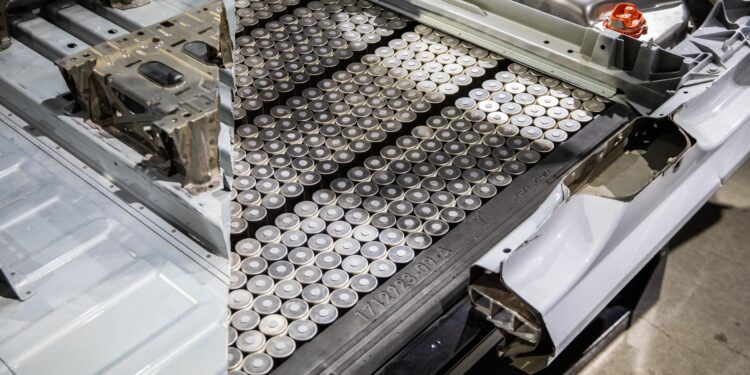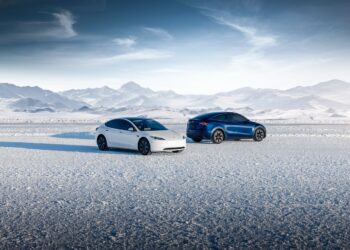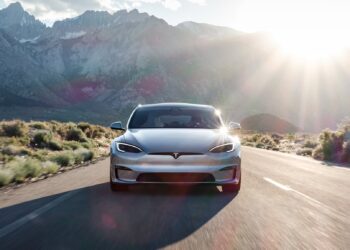The battle for the dominance of the electrical automobile sector would probably be decided by the market’s key battery makers. With this in thoughts, firms resembling BYD, CATL, and Tesla — all of whom are exploring the structural battery type issue — have the prospect to develop into the trailblazers of the subsequent era of electrical automotive batteries.
Throughout its Battery Day occasion, Tesla introduced its 4680 cells, that are used alongside the corporate’s structural battery pack. BYD, alternatively, has additionally launched its Blade batteries, which additionally undertake a non-modular method. CATL’s Qilin batteries are in the identical phase, with its structural battery design.
Electrical automobile battery fanatic Jordan Giesige of YouTube’s The Limiting Factor channel lately performed a comparability of the benefits and downsides of Tesla, BYD, and CATL’s next-generation structural packs. Every battery pack was evaluated in keeping with a number of elements, resembling design, rigidity, packing and power density, and security, earlier than being ranked. It must be famous that the figures used within the comparisons are drawn from estimates and supplies launched by Tesla, BYD, and CATL themselves, not present real-world observations.
As famous by Giesige, Tesla’s 4680 structural battery packs make the most of hundreds of cylindrical cells with a cooling ribbon in between each different row of cells. A lid is then positioned on prime and polyurethane foam is injected into the pack. This polyurethane hardens, and the mix of the froth and the battery cells varieties a inflexible, honeycomb-type construction.
CATL Qilin batteries, which might be fitted with each nickel and iron-based cells, combine thermal pads, the liquid cooling plate, and the cross bracing to create what might be described as structural cooling. The structural cooling is positioned between every row of prismatic battery cells, and the cells themselves are positioned into the pack immediately with none modules. BYD Blade batteries use iron-based prismatic cells, although these cells are longer and thinner than these utilized by CATL. The cells are then stretched throughout the BYD Blade battery pack, permitting the cells themselves to switch typical metal beams.
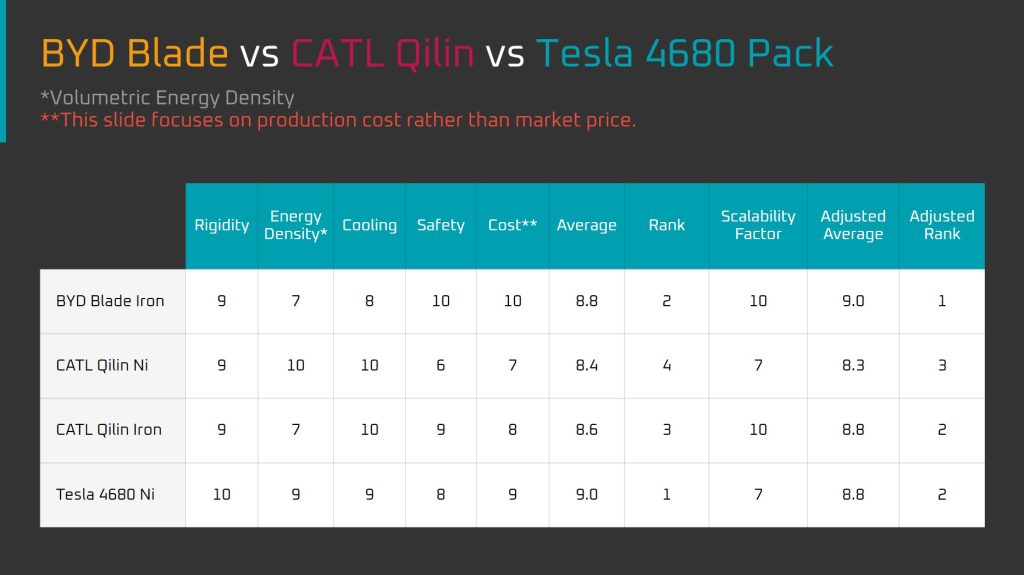
Within the rankings of the next-generation batteries, the YouTube host famous that Tesla’s 4680 structural battery pack would probably be probably the most inflexible amongst its friends. Tesla’s 4680 pack loses out by way of packing density, nevertheless, as BYD and CATL’s use of prismatic cells maximizes volumetric power density. With this in thoughts, and contemplating that CATL’s Qilin batteries may be fitted with high-energy density nickel-based cells, a nickel-based Qilin battery would probably be extra power dense than a nickel-based Tesla 4680 pack or a BYD Blade structural battery, which makes use of much less power dense iron-based cells.
As for cooling, Giesige famous that the BYD Blade batteries’ plate cooling would probably fall in need of the Tesla 4680 pack and CATL Qilin battery’s cooling techniques. In its advertising and marketing supplies, CATL highlighted that cooling the edges of the Qilin battery will increase the pack’s cooling space 4 occasions. Tesla’s 4680 battery additionally makes use of higher cooling than BYD’s Blade batteries with its aspect cooling system, although it will probably not be pretty much as good because the cooling of CATL’s Qilin structural packs.
Whereas BYD’s Blade batteries lose out in cooling, they’re additionally probably the most secure amongst its friends. It’s because the BYD Blade battery makes use of iron-based cells, which have the next decomposition and decrease warmth launch temperature than the nickel-based cells utilized in Tesla’s 4680 cells and CATL’s nickel-based Qilin batteries. An iron-based Qilin battery comes second to the BYD Blade, partly as a result of its use of shorter and thicker prismatic cells, which can entice extra warmth.
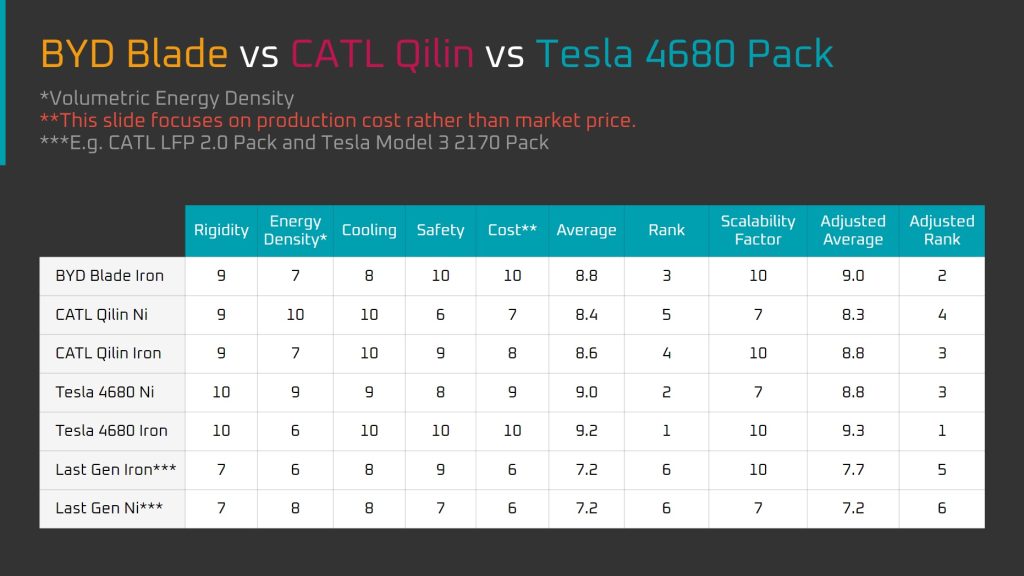
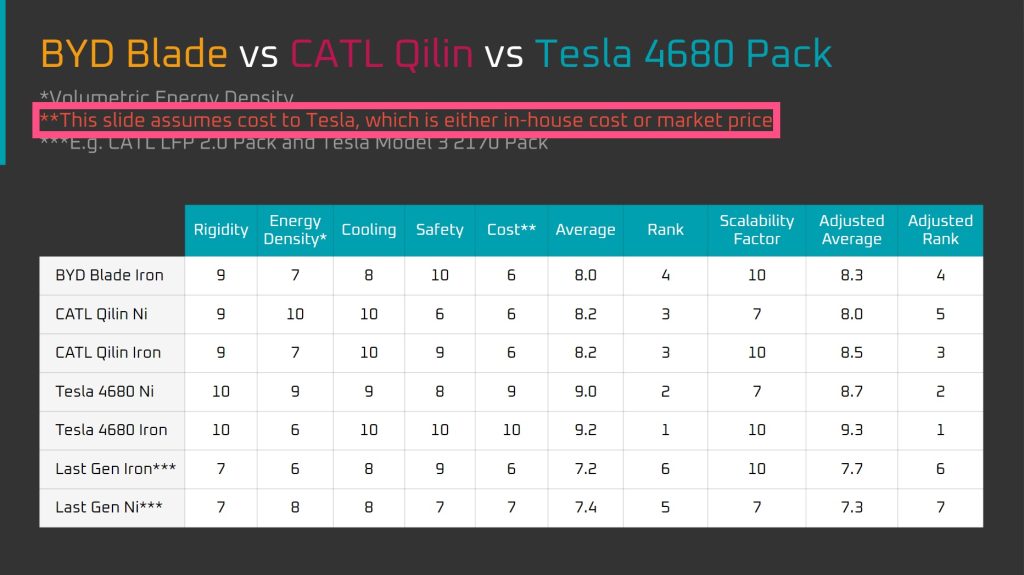
A Qilin pack with nickel-based cells was ranked final by way of security by the battery fanatic, as Tesla’s 4680 pack with nickel-based cells options a number of security techniques, resembling an overpressure mechanism on the underside of the cells themselves. Since 4680 cells are additionally smaller than the prismatic cells used within the BYD Blade and CATL Qilin, they comprise much less power. The 4680 cells themselves are enclosed in a thick shell as effectively, that are about 2-3 occasions thicker than a standard battery.
Total, Giesige famous that Tesla’s 4680 cells are probably the most effective all-rounder in comparison with its friends within the structural battery phase. The general scores of the BYD Blade and CATL Qilin batteries bode effectively for Tesla’s future, nevertheless, as the businesses might develop into suppliers of the EV maker sooner or later. CATL is already supplying Tesla with LFP batteries at this time, and BYD is closely rumored to be a Tesla provider as effectively. In a manner, the evaluation of the next-generation structural EV batteries exhibits that Tesla will not be alone in pushing the battery trade ahead.
Watch The Limiting Issue‘s full evaluation within the video under.
Don’t hesitate to contact us with information ideas. Simply ship a message to simon@teslarati.com to offer us a heads up.

